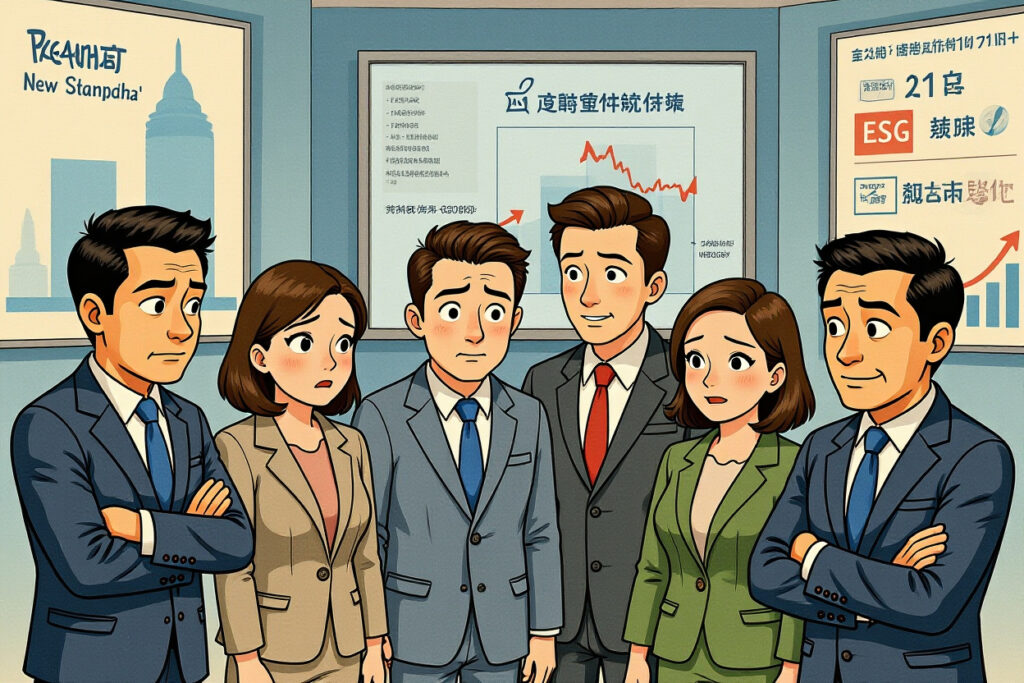Executive Summary
- Goldman Sachs maintains a cautiously optimistic outlook on Chinese equities, emphasizing selective opportunities amid ongoing market reforms.
- Key sectors highlighted for growth include technology, consumer goods, and green energy, driven by policy support and domestic demand.
- Regulatory clarity and economic stabilization measures are expected to bolster investor confidence in the medium to long term.
- Global investors are advised to prioritize high-quality companies with strong governance and alignment with national strategic goals.
Market Context and Goldman’s Perspective
Goldman Sachs’ latest views on Chinese equities come at a pivotal time for global investors. As China continues to navigate economic transitions and regulatory adjustments, the firm’s insights provide a valuable roadmap for capital allocation. The Chinese equity market, represented by indices such as the Shanghai Composite (上证综指) and the CSI 300 (沪深300), has shown resilience despite external pressures. Goldman Sachs emphasizes that while short-term volatility may persist, structural drivers such as technological innovation and consumption upgrades offer compelling long-term opportunities.
Sector-Specific Recommendations
Goldman Sachs identifies several sectors poised for outperformance. Technology companies, particularly those in semiconductors and artificial intelligence, benefit from policy tailwinds under the ‘Made in China 2025’ initiative. Consumer discretionary stocks are also favored, supported by rising household incomes and urbanization trends. Additionally, green energy and electric vehicle (EV) sectors align with China’s dual carbon goals, making them attractive for sustainable investment strategies.
Regulatory Environment and Its Impact
The regulatory landscape in China has evolved significantly, influencing market sentiment and capital flows. Goldman Sachs’ latest views on Chinese equities highlight the importance of understanding these changes. Recent policies aimed at enhancing market transparency and corporate governance have initially sparked uncertainty but are now seen as steps toward a more mature and stable market. For instance, reforms in the financial sector, overseen by the China Securities Regulatory Commission (CSRC) (中国证监会), aim to reduce systemic risks and protect investor interests.
Case Study: Tech Sector Adjustments
The technology sector has been a focal point of regulatory scrutiny. Goldman Sachs notes that while initial crackdowns on antitrust practices and data security caused short-term disruptions, they have ultimately fostered a healthier competitive environment. Companies like Alibaba Group (阿里巴巴集团) and Tencent (腾讯) have adapted to new regulations, demonstrating resilience and potential for renewed growth. Investors are encouraged to monitor regulatory announcements for ongoing insights into sector dynamics.
Economic Indicators and Market Performance
Goldman Sachs’ analysis incorporates key economic indicators that influence Chinese equities. GDP growth, inflation rates, and monetary policy decisions by the People’s Bank of China (PBOC) (中国人民银行) are critical factors. Recent data suggests a stabilizing economy, with targeted stimulus measures supporting recovery in key sectors. The firm also emphasizes the role of foreign investment flows, driven by initiatives such as the Stock Connect programs, which facilitate cross-border trading between Hong Kong and mainland exchanges.
Quantitative Insights and Data Trends
Goldman Sachs provides data-driven insights to support its views. For example, the CSI 300 index has delivered an average annual return of 8% over the past five years, outperforming many global benchmarks. Corporate earnings growth remains robust, with an average increase of 12% year-over-year for listed companies. These trends underscore the potential for sustained outperformance, particularly for investors with a long-term horizon.
Investment Strategies and Risk Management
Based on Goldman Sachs’ latest views on Chinese equities, the firm recommends a balanced approach to portfolio construction. Diversification across sectors and market capitalizations can mitigate risks associated with regulatory changes and economic cycles. Additionally, incorporating ESG (Environmental, Social, and Governance) criteria is increasingly important, as aligned companies tend to demonstrate stronger resilience and performance.
Practical Steps for Investors
Investors should consider the following actions: First, conduct thorough due diligence on companies’ regulatory compliance and governance structures. Second, leverage research from authoritative sources, including Goldman Sachs’ reports and CSRC announcements. Third, utilize tools such as the Hong Kong Exchange (港交所) for accessing Chinese equities via international channels. Finally, maintain a long-term perspective, focusing on fundamental drivers rather than short-term market noise.
Synthesis and Forward Guidance
Goldman Sachs’ latest views on Chinese equities offer a nuanced perspective for global investors. While challenges remain, the firm’s analysis suggests that strategic opportunities abound for those willing to navigate the complexities of the market. Key takeaways include the importance of sector selection, regulatory awareness, and a long-term investment horizon. As China continues to integrate into global financial systems, its equity market is poised to play an increasingly significant role in international portfolios.
For further insights, investors can access Goldman Sachs’ full report [here] (insert link to report if available) or monitor updates from the CSRC official website. Proactive engagement with market developments will be essential for capitalizing on the evolving landscape of Chinese equities.




